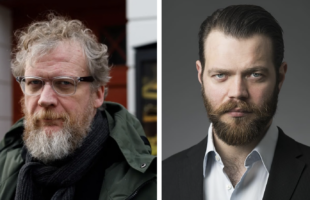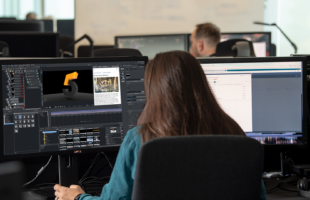If you are not working for a public broadcaster with a remit to produce it, blue-chip wildlife can be a bit of hard sell for a commissioning editor. The lead time is long, often two or three years for one six-part series, and the cost is enormous. But Netflix has deep pockets and a long-term strategy, so perhaps it shouldn’t have been a big surprise when it unveiled Our Planet last April. The eight-part was made by Silverback Films, the indie set up in 2012 by Alastair Fothergill and Keith Scholey, who produced the BBC’s David Attenborough-fronted Planet Earth, Frozen Planet and Blue Planet. The pair will film WWF’s projects in 4K and deliver the results in 2019. The U.S. streamer’s famous metric and algorithms have spoken with the VP of Netflix original documentaries Lisa Nishimura pointing to the numbers achieved by BBC’s Planet on Netflix as a reason for the commission. The project was announced during the last MIPTV in April and came just as Phil Craig, the new Chief Creative Officer at Discovery Networks International (DNI) was revealing Life of Dogs, a 5 x 60 series from Plimsoil Productions. It’s DNI’s first original blue-chip natural history commission. Discovery Channel in the U.S. also revealed that it is keen to take the network back to its core values. “It’s about putting a stake in the ground,” Craig said. “I want to establish a unit that cab rival BBC Bristol. I want us to be a world-class provider – not just an expensive natural history, but also other kinds of natural history. I’m throwing down the gauntlet. To me, Discovery without animal isn’t really Discovery.” The broadcaster isn’t short of cash either, as its aggressive mergers and acquisitions strategy has shown in recent years. But veteran wildlife producer Phil Fairclough, CEO of Earth Touch USA, says blue-chip is a brave move.
He said, “There needs to be a deep commitment. Epic nature history takes USD$2 to 2.5 million per hour with a two to three years production. That’s a long-term commitment that won’t bear fruit for at least three years. If you’re a commissioner and you’re expected to put up rating quickly, making a commitment to something that requires a lot of money and won’t deliver for three years is nerve-wrecking. It’s a tough choice for Discovery. “Unless producers have an understanding broadcasters or commissioner who has lived through that or is willing to wait for four years and write a big cheque, like Netflix, then doing high-end nature history is difficult. You want it fast, cheap and good? You can only have two of those. Let’s also factor in some unpredictability, a random EI Nino effect, for example. You know before you start there will be something that throws the production off course. Trying to write that into a budget for a broadcaster is tough.” With budget ever tighter at public broadcasters and BBC – the genre leader for more than 60 years – under financial and political pressures, will natural history become the preserve of wealthy commercial entities? Alison Kirkham, the BBC acting head of factual commissioning, doesn’t think so and the corporation partnered with U.S. pubcaster PBS earlier last year on Big Blue Live, which studied the animals in the Monterey Bay National Marine Sanctuary in California. It has also enjoyed success with Africa and Life in the recent past.
“Pieces of scale work for the BBCI audience,” Kirkham said. “They do well for us and we want to continue to do them.” Harry Marshall, Creative Director and Producer at Icon Film say, “Pubcasters still have a key role. There are very few outlets out there that can provide that level of funding that isn’t public broadcasters. Microsoft co-founder Paul Allen’s outfit, Vulcan Capital, has been funding some projects but that is very high-end environmental philanthropy. Our projects invariably end up being Anglo-American, with a channel like Nat Geo, Discovery or PBS and U.K. broadcaster like BBC, Channel 4 or maybe Channel 5, with an international distributor attached to make up the rest.” Call Hall, founder of the UK’s Parthenon Entertainment and now running Warehouse 51 Productions, after Parthenon’s sale to Sky and transition into Sky Vision, doesn’t think Netflix’s involvement will end pubcasters’ wildlife efforts either. “I’m a big believer in the PBS linking up with Netflix,” he says. “You need to showcase. You wouldn’t necessarily go to Netflix and click on the wildlife section straight away, but if you’ve seen the show or a pilot on another channel, it’s very likely.” Atlantic Productions CEO, Anthony Geffen, who produced a series of Attenborough shows for U.K. broadcaster Sky, including Kingdom of Plants and Galapagos, is working on Great Barrier Reef for the BBC. “Pubcasters will just have to work harder with their coproduction. The top producers in the natural history world want to work with the national broadcasters because it’s prestigious and nice to be on those platforms,” he says. Fothergill at Silverback has promised Our Planet will “raise the bar for natural history landmarks,” and Craig at DNI has coined the phrase “new-chip” for his channels’ reimagining of the genre. But will the style of blue-chip natural history programming change that much? Bear Grylls, who has become the go-to front man in the survivalist genre, was criticised recently for describing the Attenborough-style programmes as too dull for a young audience. “If it’s just natural history, it can be a bit dry,” he said. “When Attenborough was 25 it was not dry because it was new, but to do something for young people now, it needs that adventure to inspire them.” Fairclough, though, doesn’t see the style of the programmes evolving much. “Natural history is the great shiny cockroach of television – it’s unkillable,” he says. “Ever since Life on Earth, the BBC’s first blockbuster natural history series, people have flocked to it. Essentially, that same show is being rolled out every three to five years even now. “The delivery mechanism keeps getting better and more beautiful but you don’t need to reinvent it much. We now have two former heads of the BBC Natural History Unit doing it for Netflix. It will look and feel the same: massively orchestral, epic landscapes, exquisite cinematography, animals doing some of the same things you’ve seen them doing in the other series with a few new behaviours.” Katy Cundall, acquisitions manager at Modern Times Group-owned U.K. distributor DRG, believes there has been a subtle shift in style. “Recently it has been done in more of an Animal Rescue style, as light factual entertainment. Now people want to see the animals contextualised a bit more,” Cundall says. “Any investment or interest from an exciting buyer such as Netflix is a good thing for the genre. I’m not sure it will herald a whole load more investment from everybody else but it could unearth new and interesting angles in the genre.” DRG has natural history series Baby Animals in the Wild (10×48) and Australia Doesn’t Just Want to Kill You on its sales slate. Icon’s Marshall is also seeing a belated shift in style.
“All genres have their cycles but natural history was unassailable for so long,” he says. It’s had to reinvent itself because audiences became saturated with awe and wonder. There’s a limit to how many times you can watch lions killing wildebeests and kingfishers diving into streams. It was so reliant on the spectacle it made it complacent. Discovery found audience weren’t watching it any longer and that brought an end to its joint venture with the BBC. “The demand to have a narrative to follow is overwhelming. We live in the age of Game of Thrones and Lord of the Rings. There is an acknowledgement by most natural history filmmakers that anthropomorphism isn’t a capital offence. Telling a good story is not something to be ashamed of.” “Wildlife documentary ruled the roost for a long time because they went to amazing places and captured amazing things. But audiences feel they’ve seen those things now. Maybe you can shoot it better or from a different angle but that’s not what they want. Natural history is going through a period of needing to be cleverer in the way it tells stories. It needs to be more surprising, in some ways more immersive, and find ways of making you feel like you’re there. It’s learning the tricks other genres have learned to hold their audiences and have a big impact.” In Canada, broadcaster Blue Ant Media has made a commitment to produce 300 hours of 4K nature content a year for its Love Nature Channel. It’s VP of Content Vanessa Case, says they are careful not to mimic the classic style. She says, “Attenborough is the star of his films. We are making the environment and the animals the stars. Most of the titles from us will not have a traditional host or a narrator because of that. You will see people, either experts or scientists, but in some cases, you won’t see humans at all. You can’t rely on a host to see you through to the next scene. The producers are being challenged but we are seeing great results







